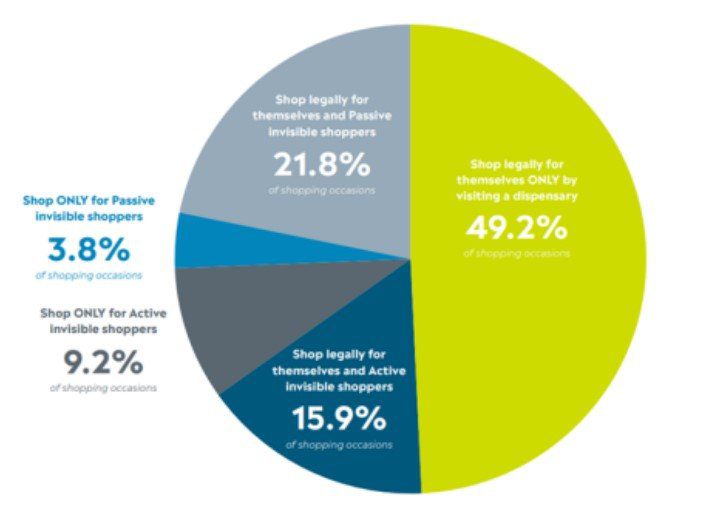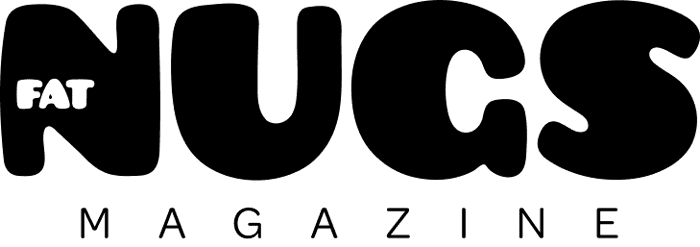Co-authored by Lara Fordis, M.A. and Tymofey Wowk, Ph.D.
Data, data, data. It’s all around us, we all know about it, but why is it important, especially for the burgeoning cannabis industry? And, who are the “invisible shoppers™” in cannabis?
There are major benefits to using data to give companies a competitive advantage across all vertical industries. These include informed and improved decision making, more effective marketing, better and personalized customer experience, streamlined operations, and mitigation of fraud, according to Bay Atlantic University.
When drilling down into consumer acquisition and experience, data has been found to significantly influence positive results. For example, according to a survey by McKinsey & Company, “data-driven organizations are 23 times more likely to acquire customers, six times as likely to retain those customers, and 19 times as likely to be profitable as a result.”
The cannabis industry is no different than other vertical markets in terms of a need for contextual, accurate, actionable consumer data, perhaps even more so given how new the industry is and what an opportunity this presents.
As brands compete for market share – particularly under challenging conditions, such as a lack of traditional financing, high taxes, macro inflation, and falling product pricing in most markets – those who learn about their consumers (both customers and prospects) and leverage this information most effectively are best poised for long-term success.
Current state of cannabis data
When cannabis operators want to know about their customers, they usually rely on Point-of Sale (POS) data. These datasets are compiled by national analytics firms with the goal of informing operators about consumer purchases and market phenomena.
The main advantage of POS datasets is that they can accurately indicate the quantity of each product purchased. This is helpful for brands looking to analyze market product trends to position themselves for product launches. POS datasets also showcase pricing trends for pricing analysis.
However, most cannabis data analytics firms take their data to a secondary level, that of demographics. This analysis relies on a fundamental assumption: each purchaser is also the consumer of the product.
At first glance, this assumption might make sense, but upon closer inspection, it becomes apparent that oftentimes, the purchaser is making purchases for multiple people, such as
roommates, family members, and friends. Therefore, when making claims about race or ethnicity, socio-economic status, or other socio-demographic factors, linking the purchase of multiple products to one person — when in fact they are consumed by multiple people separately — invalidates the analysis to a certain extent. Further, brands relying on this type of data to identify and interact with their target market are misguided in who is actually using their products, thereby wasting energy in potentially targeting the wrong groups.
Filling in the gaps
To address this gap in cannabis data, Fordis Consulting, in partnership with 4042 North Agency, collected survey data on 1,229 cannabis consumers across 11 states (AZ, CA, CO, IL, MA, MI, NV, NJ, NY, OR, WA). We asked a series of questions to ascertain more accurate shopping and consumption habits.
One question in particular led us to our conclusion about misguided socio-demographic findings from POS datasets:
“who do you typically purchase for when you visit a dispensary?”
 The choices were as follows: 1) myself, 2) myself and others, 3) only others.
The choices were as follows: 1) myself, 2) myself and others, 3) only others.
We then drilled down into the second and third responses to find out who, exactly, customers were shopping for, all of which can inform brands nationally and within each adult-use state. We also asked who was making the purchasing decisions; for example, was it the shopper in the dispensary or the “invisible shopper™”? Last, we categorized “invisible shoppers™” into “active” (people at home making purchasing decisions) and “passive” (people in dispensaries making decisions for people at home).
There are some interesting findings from the entire sample. Most importantly, only 49% of shoppers are purchasing only for themselves. Therefore, POS data captures the sales but not who the sales are actually for. Indeed, on the other end of the spectrum, 13% of shoppers are not even shopping for themselves at all. And whether active or passive invisible shoppers™ are involved, it’s difficult to disentangle which products are purchased for whom without further investigation, something brands can explore within each market to better understand their actual consumers.
Conclusion
By asking consumers directly about their habits, informed brand strategies can be executed in each market. This may pertain to social media campaigns about cannabis, lifestyle or even product formulation and development. Further, customer satisfaction measures can be explored once actual consumers are clearly defined.
In short, while POS data is invaluable to understand pricing and product trends, custom survey research can provide insights into consumers’ lives that retail data reporting measures cannot capture, including who is shopping for whom, what is being purchased for whom, and ideally what else might we be able to discover about invisible shoppers’ attitudes, beliefs, and habits that can inform brands to deliver the best possible experience to their real consumers.
With a deeper dive into tailored survey research, brands have the opportunity to become increasingly targeted in meeting consumers — current and potential ones — both where they are and where they might be going, something surely every brand wants and will need as competition intensifies over time.


